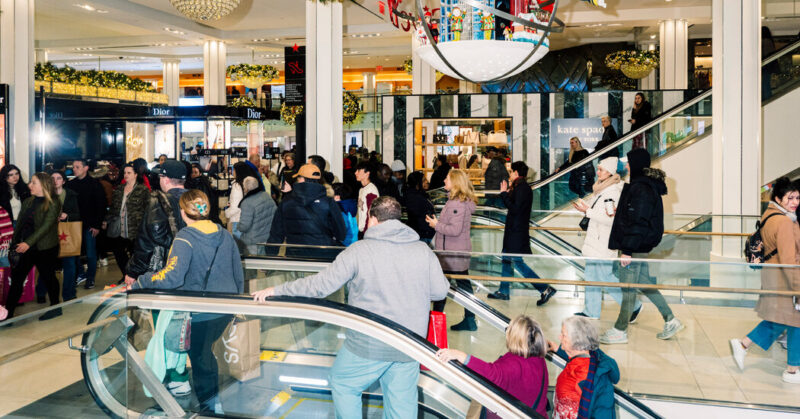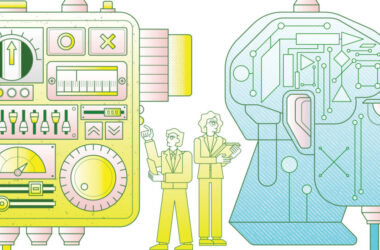American buyers, burned by greater than two years of fast inflation, are getting some welcome reduction this vacation season: Costs on many merchandise are falling.
Toys are virtually 3 p.c cheaper this Christmas than final, authorities knowledge reveals. Sports activities tools is down almost 2 p.c. Greater-ticket objects are additionally exhibiting worth declines: Washing machines value 12 p.c lower than a 12 months in the past, for instance. And eggs, whose meteoric rise in costs final winter turned a major instance of the nation’s inflation downside, are down 22 p.c over the previous 12 months.
Client costs, within the combination, are nonetheless rising, although not almost as rapidly as a 12 months in the past. Most groceries nonetheless value greater than they did a 12 months in the past. So do most providers, corresponding to restaurant meals, haircuts and journeys to the dentist. And housing prices, the most important month-to-month expense for many Individuals, are nonetheless rising for each renters and residential patrons. Total, the worth of bodily items is flat over the previous 12 months, whereas the worth of providers is up a bit greater than 5 p.c.
Nonetheless, economists view the moderation in items costs as an essential step towards placing the excessive inflation of the previous two and a half years extra firmly within the rearview mirror. They anticipate it to proceed: Most forecasters say costs for bodily merchandise will maintain falling subsequent 12 months, particularly costs for longer-lasting manufactured items, the place the latest declines have been largest. That ought to assist worth will increase general to ease.
“We’re simply type of at first of that part, and we should always proceed to see downward stress on costs on this class,” stated Michelle Meyer, chief economist for Mastercard.
For shoppers, who’ve been dour concerning the economic system regardless of low unemployment, falling costs on many items might present a psychological raise. After the fast inflation of the previous few years, a mere slowdown in worth will increase won’t really feel like a lot to rejoice. However seeing costs fall could possibly be a special story — particularly as a result of a few of the greatest latest declines have been in classes that buyers are inclined to pay probably the most consideration to, corresponding to gasoline. (The value of standard fuel, which topped $5 a gallon nationally in June 2022, has fallen to simply over $3 on common, in response to AAA.)
“Individuals will key in on sure costs,” stated Neale Mahoney, a Stanford College economist who just lately left a job within the Biden administration. “We all know that folks will chubby sure issues.”
The value of many items soared in 2021, fed by a surge in demand from shoppers flush with pandemic reduction checks and by provide chain disruptions that restricted provides of many merchandise, particularly these from abroad.
Many economists initially anticipated a fast reversal, however as a substitute costs saved rising. Provide chains took longer to return to regular than anticipated, and Russia’s invasion of Ukraine led to a spike in vitality costs in 2022. On the identical time, client demand for items remained excessive, and lots of firms took benefit of the chance to push by means of worth will increase and pad their revenue margins.
Now, nevertheless, lots of these forces are starting to fade. Provide chains have largely returned to regular. Oil costs have fallen. Financial weak point in China and different nations has held down demand for a lot of uncooked supplies, which feeds by means of to client costs.
Softer demand from American shoppers may be enjoying a job. The Federal Reserve has raised rates of interest repeatedly since early final 12 months in an effort to curb spending and management inflation. Shoppers have to this point proved remarkably resilient, however retailers in latest months have reported that buyers have more and more traded right down to cheaper objects or waited for gross sales earlier than shopping for — tendencies that might speed up if the economic system cools additional subsequent 12 months.
“We expect that the patron goes to be in search of worth, and that’s as a result of they’re very delicate to cost,” Carlos E. Alberini, chief govt of Guess, the style retailer, instructed traders final month. The corporate has “revisited a few of the pricing construction we have now in all manufacturers,” he added.
Some toy producers and retailers that promote toys have additionally stated they anticipate gross sales this season to be much less sturdy than in years previous and have leaned into promoting their merchandise’ affordability.
At many firms, worth cuts have taken the type of Black Friday gross sales and vacation promotions which might be bigger for some classes of things than in previous years. At Signet Jewelers, the massive diamond retailer, gross sales fell within the third quarter, and the corporate just lately stated that it anticipated gross sales to be decrease this vacation season than final 12 months partially due to “elevated promotional exercise.”
“It’s been a special vacation season,” Virginia C. Drosos, Signet’s chief govt, instructed traders on a convention name this month. As an alternative of buying early, clients are ready to make their purchases and are in search of offers, she stated.
Matt Pavich, senior director of innovation and technique for Revionics, an organization that makes use of synthetic intelligence to assist retailers set costs, stated firms had been making an attempt to chop costs earlier than their rivals do.
“As costs come down, there’s going to be the race to deliver costs down extra, get the credit score for that,” he stated. “We’re going to see retailers actually making an attempt to win again shoppers’ belief.”
Nonetheless, costs for many merchandise stay properly above the place they had been earlier than the pandemic. A dozen eggs value about 50 cents greater than in February 2020. Used automobile costs, one other outstanding instance of pandemic sticker shock, have fallen greater than 10 p.c from their peak early final 12 months however are 37 p.c above the place they had been in February 2020.
Providers costs are nonetheless climbing extra rapidly than earlier than the pandemic. Some economists say that items costs might want to fall additional for general inflation to return to the Federal Reserve’s goal of two p.c a 12 months.
“We’d like fairly substantial deflation, and I wouldn’t name what we’re seeing ‘substantial,’” stated Wendy Edelberg, director of the Hamilton Venture, an financial coverage division of the Brookings Establishment. “It’s not even substantial in a historic context.”
Certainly, costs of sturdy items fell a lot of the 20 years that preceded the pandemic. Lengthy-term tendencies corresponding to globalization and automation have tended to push down manufacturing prices. Intense competitors amongst retailers, particularly with the rise of on-line buying, meant these financial savings had been principally handed on to shoppers.
Providers costs, then again, hardly ever fall, partially as a result of wages account for a a lot bigger share of the price of most providers. Through the decade earlier than the pandemic, providers costs progressively rose whereas items costs had been flat or fell, leading to an prolonged interval of steady, reasonable inflation.
Economists don’t anticipate to see outright deflation, through which costs fall for each items and providers. That’s a very good factor: Total worth declines are typically considered as economically harmful, in the event that they final.
There are just a few causes. For starters, in idea, deflation might immediate shoppers to carry off on spending, touching off a downward spiral. Individuals could also be unlikely to purchase at the moment what they anticipate to be cheaper tomorrow. As soon as deflation takes maintain, it may be troublesome to flee: Japan has been caught in a deflationary sample for the reason that late Nineties.
“When demand within the economic system is weak, the very last thing you need is somebody to say, ‘I’m not going to purchase that automobile at the moment as a result of it’s going to be $600 inexpensive in six months,’” stated Karen Dynan, an economist at Harvard.
For one more, firms are unlikely to lift wages in a world the place they can not cost extra. And if wages are usually not going up — or are even taking place — it is going to be more durable for households to maintain up with mounted payments, like mortgage curiosity funds.
However whereas broad-based worth declines are an issue, most economists view the extra restricted declines taking place now as an indication that the economic system is progressively shifting previous the disruptions of the pandemic.
“Provide chains have mainly normalized,” stated Neil Dutta, head of financial analysis at Renaissance Macro. “Family demand conduct has mainly normalized, the greenback remains to be fairly robust. I wouldn’t see a purpose why items costs would go increased.”








